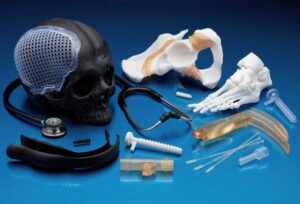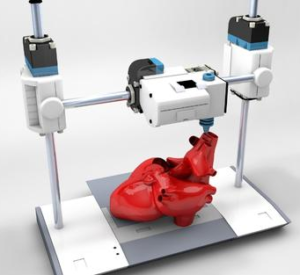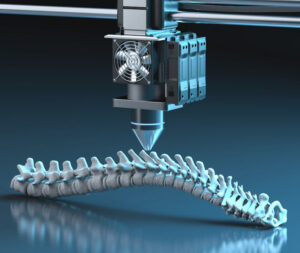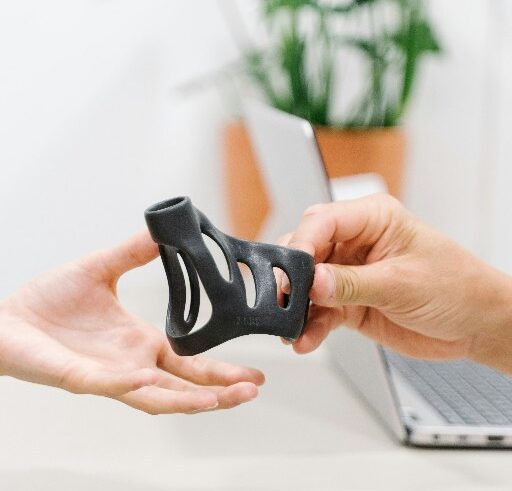Revolutionizing Healthcare: 3D Printing
Farah Naz Akbar¹, Muhammad Yamin²
¹Department of Allied Health Sciences, Sargodha Medical College, University of Sargodha, Pakistan
²Faculty of Agricultural Engineering & Technology, University of Agriculture, Faisalabad, Pakistan
Imagine a world where damaged bones are replaced with custom-made 3D-printed implants, or surgeons practice complex procedures on realistic 3D replicas of patients’ organs. This is no longer science fiction! 3D printing is revolutionizing healthcare, offering groundbreaking solutions that are transforming patient care. In recent years, the landscape of healthcare has been undergoing a profound transformation, and at the heart of this evolution is the revolutionary technology of 3D printing. This critical examination explores the multifaceted applications of 3D printing in the medical field, shedding light on its transformative impact and the considerations that come with such innovation.
Patient-Specific Implants and Prosthetics
One of the most lauded applications of 3D printing in medicine lies in the realm of patient-specific implants and prosthetics. Traditional manufacturing methods often struggle to provide personalized solutions, but 3D printing transcends these limitations. It enables the creation of implants and prosthetics tailored to the unique anatomical features of individual patients. This not only enhances the fit and functionality of these devices but also contributes to improved patient outcomes.

Surgical Planning and Training
3D printing has emerged as a valuable tool in surgical planning and training. Surgeons can now obtain detailed 3D-printed models of patients’ organs or problematic areas, allowing for meticulous preoperative planning. This hands-on approach enhances surgeons’ spatial understanding and dexterity, potentially reducing surgery time and minimizing risks during the actual procedure. The ability to practice on lifelike 3D-printed models contributes to the continuous refinement of surgical skills.

Bioprinting and Tissue Engineering
Perhaps the most groundbreaking application of 3D printing in medicine is bioprinting and tissue engineering. This futuristic endeavor involves layer-by-layer deposition of living cells to construct functional tissues and organs. While still in its nascent stages, bioprinting holds immense promise for addressing the global shortage of transplantable organs. However, ethical considerations and regulatory challenges must be navigated as this technology progresses.

Considerations and Challenges
While the potential of 3D printing in medicine is vast, critical analysis reveals certain considerations. Quality control and standardization of 3D-printed medical devices are paramount to ensuring their safety and efficacy. Regulatory frameworks must evolve to accommodate the unique nature of 3D-printed medical products. Additionally, the cost implications and accessibility of 3D printing technologies pose challenges that need to be addressed for widespread adoption.
The Future Landscape
The critical role of 3D printing in the medical field is undeniably transformative. As technology continues to advance, we can anticipate further innovations and refinements in 3D-printed medical solutions. Collaborations between researchers, clinicians, and regulatory bodies are imperative to harness the full potential of this technology while addressing the ethical, legal, and practical considerations associated with its integration into mainstream healthcare.
In conclusion, the integration of 3D printing into the medical field marks a watershed moment in healthcare. This critical examination emphasizes the need for a balanced approach, acknowledging both the groundbreaking potential and the challenges that accompany the application of 3D printing in medicine. As this technology matures, it holds the promise of revolutionizing patient care and reshaping the landscape of modern healthcare.







Thanks for sharing. I read many of your blog posts, cool, your blog is very good.